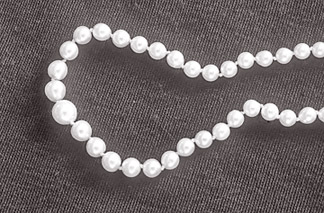Heritage of Sri Lanka - pearl fisheries
Prof W. I. Siriweera
Pearls were the most valuable aquatic resource in Sri Lanka and were
exploited from pre-Christian times. Megasthenes; the Greek ambassador to
the Mauryan royal court in India in the fourth century B.C; the Roman
writers Pliny and Solinus Polyhistor as well as the author of the
Periplus of the Erythrian Sea, the Chinese travellers Fa-Hsien,
Wang-Ta-Yuan, Hieun-Tsang, Mahuan and Fehsin; Suleiman, the nineth
century Arab geographer; Al-Beruni, the Persian historian who served in
the court of Sultan Ghazni Mahmud of Delhi in the 11th century; the 12th
century Arab traveller Al Idrisi; the 13th century Arab geographer
Kazwini and the historian Al-Maqrisi; the 14th century Bishop Jordanus
as well as the Italian Friar Odoric; the famous Arab traveller Ibn
Batuta who arrived in the island in 1344; have all alike emphasized the
importance of the pearl banks and pearl fisheries in Sri Lanka.
Fa-Hsien records
Some of them, such as Megasthenes, Polyhistor and Fa-Hsien, state
that large and precious pearls were found in the island of Taprobane.
According to Fa-Hsien, there were extremely valuable gems and pearls
deposited in the monastic store-houses at Anuradhapura. Hieun-Tsang as
well as Wang-Ta-Yuan refer to the rituals performed by the king just
before the pearl fisheries began. Polyhistor states that the value of
pearls depended on feeding patterns of the oysters. Fa-Hsien records
that three out of every five pearls belonged to the king while
Hieun-Tsang mentions that a share of the pearls was taken by the king as
tax.
 |
|
String of
pearls |
According to Wang-Ta-Yuan three out of every ten pearls were given to
the king. These discrepancies indicate the fact that the king’s share
was not static and uniform and that it varied from time to time. Ibn
Batuta stated that the king of Jaffna or Aryacakravarti possessed many
valuable pearls and that when he visited the court of Jaffna he saw the
king’s employees sorting out pearls.
Political developments
Bishop Jordanus has written on pearl fisheries conducted in the sea
between India and Sri Lanka, (most probably off Mannar) by utilizing
about 8,000 crafts. Wang-Ta-Yuan too provides a graphic description of
the pearl fisheries and pearl divers off the cost of Sri Lanka.
The Portuguese chronicles and documents of the 16th and 17th
centuries have preserved detailed evidence on pearl fishing off the
coast of Mannar. As C.R. de Silva has pointed out, they enable us to
obtain some idea of the size and importance of the industry, the methods
of fishing employed and the impact of the pearl fishery on religious and
political developments of the littoral. During this era, the best known
and the largest of the pearl banks were located off Hainan in the South
China sea, off the island of Bahrein in the Persian Gulf and in the Gulf
of Mannar.
The pearl beds off South India and Sri Lanka constituted one of the
two major sources of pearls in the world, rivalled in size only by that
of Hainan. The pearls fished from the Gulf of Mannar were also
considered among the best in the world and fetched a high price in
Europe.
During the Portuguese period a total of 50,000 to 60,000 persons
including divers, merchants and others were occupied in the pearl
fishery at Mannar when it was held. The decision whether or not to hold
the fishing was taken on the basis of a pilot survey carried out in the
previous year. In the month before the actual harvesting took place, a
series of temporary buildings were constructed on the seashore near the
oyster beds.
These buildings served as store houses, shops and dwellings. The
captain of Mannar, who supervised the construction, allotted different
areas to different castes. Then the participating vessels and divers
were registered.
The number of such vessels varied between two hundred and four
hundred with a maximum of eight divers to a boat.
Colonial rule
The exploitation of pearl fisheries continued during the Dutch and
the British colonial rule. The British earned considerable revenue from
pearls of Ceylon. For example from March 1828 to May 1837 alone Sterling
Pounds 227,131 were credited as revenue into the Ceylon Treasury on
account of the pearl fisheries. To be continued
|



